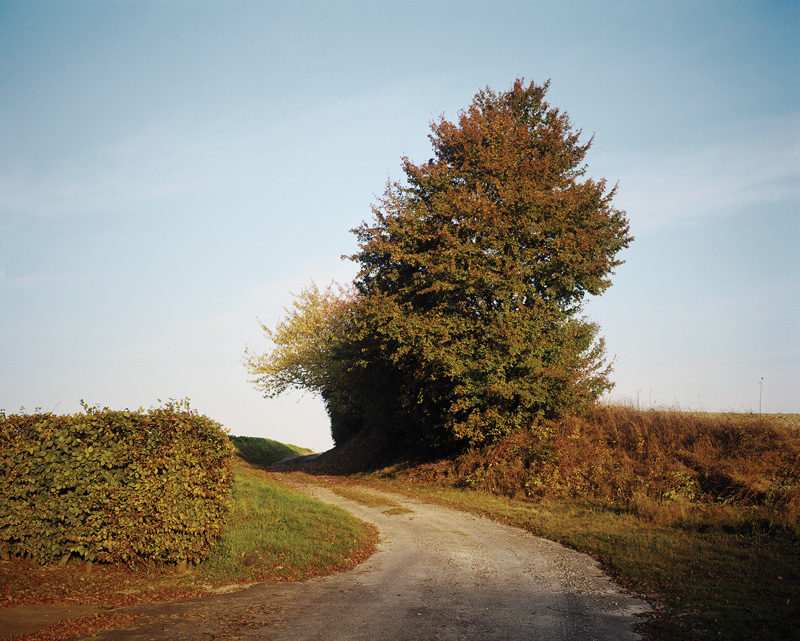[Fall 2012]
An interview by Jacques Doyon
Jacques Doyon: Christie’s New York auction house just announced that Jeff Wall’s 1992 photograph Dead Troops Talk (A Vision after an Ambush of a Red Army Patrol, near Moqor, Afghanistan, Winter 1986) has been sold for $3.6 million, a record for the Canadian artist. This makes it the most expensive Canadian photograph, and the third-most-expensive photograph ever sold at auction, after works by Andreas Gursky and Cindy Sherman. What do these record sales say about the current market for contemporary photography, and about its legitimization?
Stephen Bulger: Your question raises a number of issues, but first we must more precisely determine the market that this sale is representative of, which, in the case of Jeff Wall, Andreas Gursky, and Cindy Sherman – to name a few – is the contemporary art market. I point this out to differentiate it from the photography market, which is where the work made by most contemporary photographers is sold. Photographs entered the contemporary art market with the Pop Art movement, when Robert Rauschenberg, Andy Warhol, and others used photographs as one of a litany of materials at their disposal and incorporated photography into their avant-garde practices. Artists such as Wall fall within this lineage, versus one defined by Alfred Stieglitz, Edward Weston, or Robert Frank.
With the advent of better technologies (drum scans, digital printing, and so on), many artists were able to make beautiful-looking large-scale photographs for the first time, and widespread use of photography in contemporary art practices soon followed. At around the same time, there seemed to be increased interest in artworks that contained tougher topical content, for which the factual aspects of photography are well suited.
What I have noticed is that some collectors of contemporary art have somewhat shifted their tastes. Soon after the economic collapse, many of these collectors, who had been buying large-scale photographic works at very high prices, began buying photographs from earlier eras. Although I think there is still a large divide between the contemporary art and contemporary photography markets, there is much less of a barrier between art and photography. Also, the fact that large sums of money are being spent on photographs of all descriptions certainly serves to legitimize the medium as a whole.
JD: Canadian photography of recent decades has often been described as characterized essentially by documentary and social practices or narrative practices related to identity issues or to the private sphere. It certainly also includes some fine examples of photojournalism. Can you help us understand how the contemporary photography market is distinct from the contemporary art market? What are its characteristics (types of practices, period)? And how has this market developed over time in Canada (who are your predecessors)?
SB: I think there is a strong documentary tradition in Canada, as well as expressive photography that relates to many of the subjects that you list. In terms of the former, I think that when we say “documentary photography” or “photojournalism” or even “fashion photography,” we are describing a use of photography in which the prime method of display is in print media, versus galleries. These are modern examples of genres that have been practised for many years and are closely associated with photographic history. I think it is with the latter group that much of the confusion emerges. When I say “expressive photography,” I mean to describe work that is consciously made for an audience composed of those interested in the visual arts and for which the prime method of display is through galleries. I don’t think that we need to further divide the audience by trying to distinguish between the photography market (which includes work by nineteenth-century makers, plus Paul Strand, Walker Evans, Helen Levitt, Diane Arbus, William Eggleston, Lee Friedlander, and others) and the contemporary photography art market (Edward Burtynsky, Richard Misrach, Mark Klett, and others), but I do see a divide between this photography market and that for contemporary art, which includes traditional media (such as drawing, painting, and sculpture) as well as newer media (photography, video, computers, and so on).
The Toronto art market was active in the mid-1970s, and Loretta Yarlow was renowned as a specialist in photographs; other galleries at this time, such as Isaacs and David Mirvish, showed photographs occasionally. From the late 1970s through the 1980s, there were the Corkin Gallery, Déjà Vu, the Baldwin Street Gallery, and the Moment in Time Gallery, all of which specialized in photography, and a handful of other galleries showed photographs rather sporadically.
During the 1980s, the Ydessa Gallery showed serious international contemporary art, and this mantle was later picked up by the S. L. Simpson Gallery. Both galleries showed a variety of media by contemporary artists, some of whom gravitated toward photographic materials but felt kinship not with “photographers,” but with the other artists that these galleries represented, whose work was embraced by the museum world long before these same museums started to collect “photography.”
JD: The history of photography has obviously found its place in our institutions. Most of the large Canadian art museums, as well as the Canadian Centre for Architecture and the Ydessa Hendeles Art Foundation, now own significant, if not even remarkable, historical collections of photography. What has the impact of the development of those collections been on the Canadian photography market? Are some of these historical works originating from, or transiting via, the Canadian market? Is the photography market essentially an institutional one, or is there a significant group of private collectors, individual or corporate? What is the impact on the photography market of the renewed interest in the Canadian photographic practices since the 1960s?
SB: Yes, they are most definitely remarkable collections! Individual collectors such as Phyllis Lambert and Ydessa Hendeles are of great importance to the marketplace. Collectors of their calibre have an effect on the entire market, not just the one at home. They buy wherever they need to buy and are not bound by any specific market. They inspire others to collect. Most people cannot afford a budget to match Phyllis or Ydessa, but they recognize the need to buy original art because of theefforts of these collectors, and I think it is chiefly the home market that benefits. The Canadian market is populated by individuals and institutions, both public and private, all of them more active in purchasing photographs than ever before. The predominance of activity is with contemporary work, but the market for older material (whether nineteenth-century or mid-twentieth-century) is growing rapidly.
JD:You mentioned that contemporary photography by photographers is sold mainly within the specific photography market. Have prices in this market been influenced by the expansion of and higher values on the contemporary art market? Has this specific market contributed to a significant increase in the value of current photographic production in Canada?
SB: People feel more comfortable buying photographs now more than ever before. Much of this has to do with improvements in the longevity of colour print materials, as well as a better understanding of proper – meaning, archival – storage for photographs. It also has to do with the fact that the market for art is increasing in general. Many of these new collectors begin with photography for a variety of reasons, but chiefly because they are good at evaluating photographs and because photographs tend to be more affordable. If someone honestly thinks that they could have taken a specific photograph, then they will never buy it, as people are quite opinionated when it comes to photography. Most people are less opinionated about sculpture or painting because they have never even attempted to make one, so they don’t feel as confident in their critique. Over the past seventeen years, I have noticed that the apprehension about buying a photograph is gone.
JD: Can we really so clearly dissociate the photography and art fields and markets? I’m thinking of artists such as Edward Burtynsky and Lynne Cohen, who are well-known photographers well recognized in the art world and art institutions. Isn’t the main trend, rather, toward full integration and recognition of photography within the art field, including, among other things, its photojournalistic, fashion, and vernacular components?
SB: Lines of division are blurred all around. I have always admired photographs as both art and artefact, and I identify with those who appreciate both high and low art. Luckily, the appetite for collecting has never been greater as the number of new collectors continues to grow. My point is that there are different breeds of collectors and that the person who pays almost $4 million for a Jeff Wall will not then decide to buy the work of another Canadian photographer, mostly because they do not see these two makers of having much in common.
Stephen Bulger studied at Ryerson University in Toronto. He was the founding director of the Ryerson Gallery, where he managed over thirty exhibitions. in 1994, he opened the Stephen Bulger gallery to exhibit and sell contemporary and historical photographs, with a special emphasis on the documentary tradition and Canadian historical photographs. He now represents over fifty photographers. Bulger is also a co-founder of CONTACT, Toronto’s photography festival; president of the board of the Association of International Photography Art Dealers; and chair of the advisory board for the Ryerson Image Centre, which opens on 29 September 2012.
Jacques Doyon has been editor-in-chief and director of Ciel variable since January 2000.





